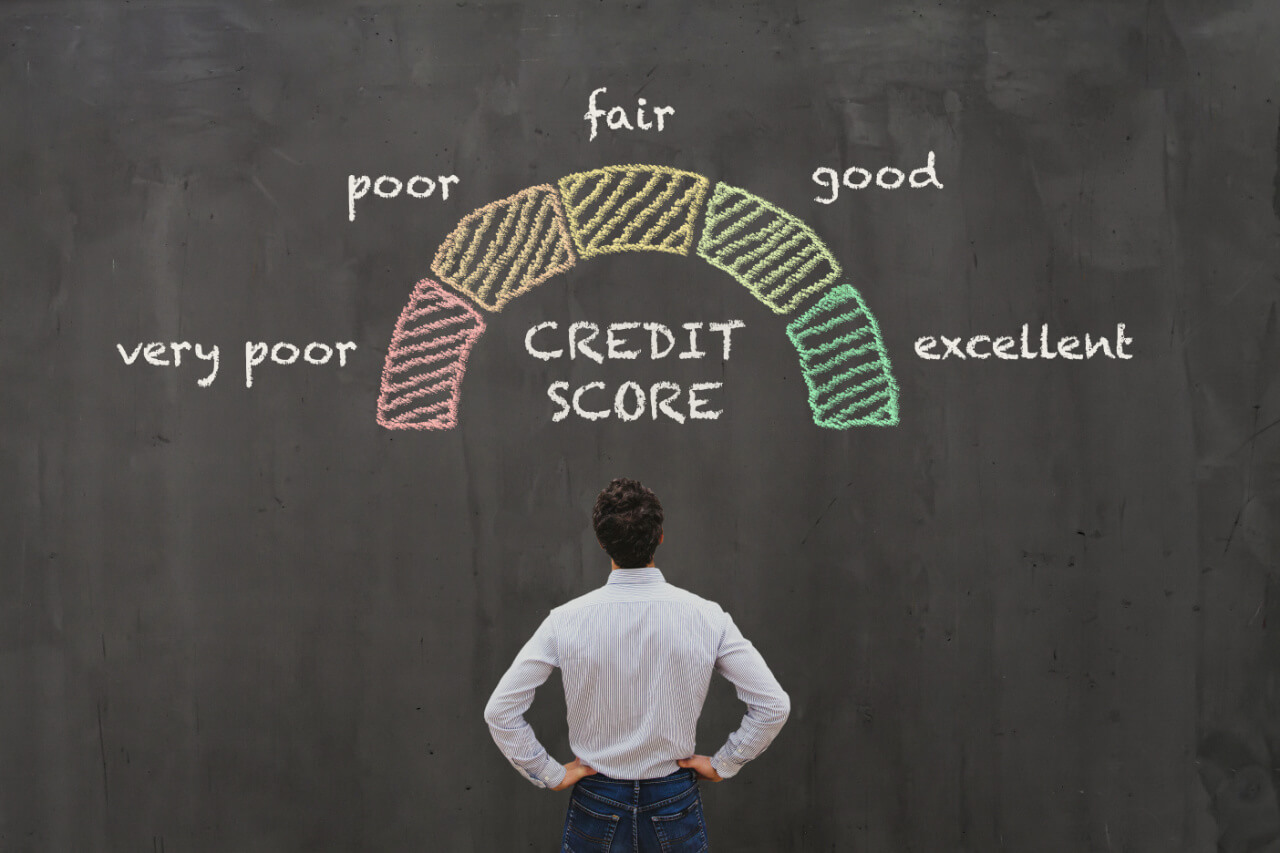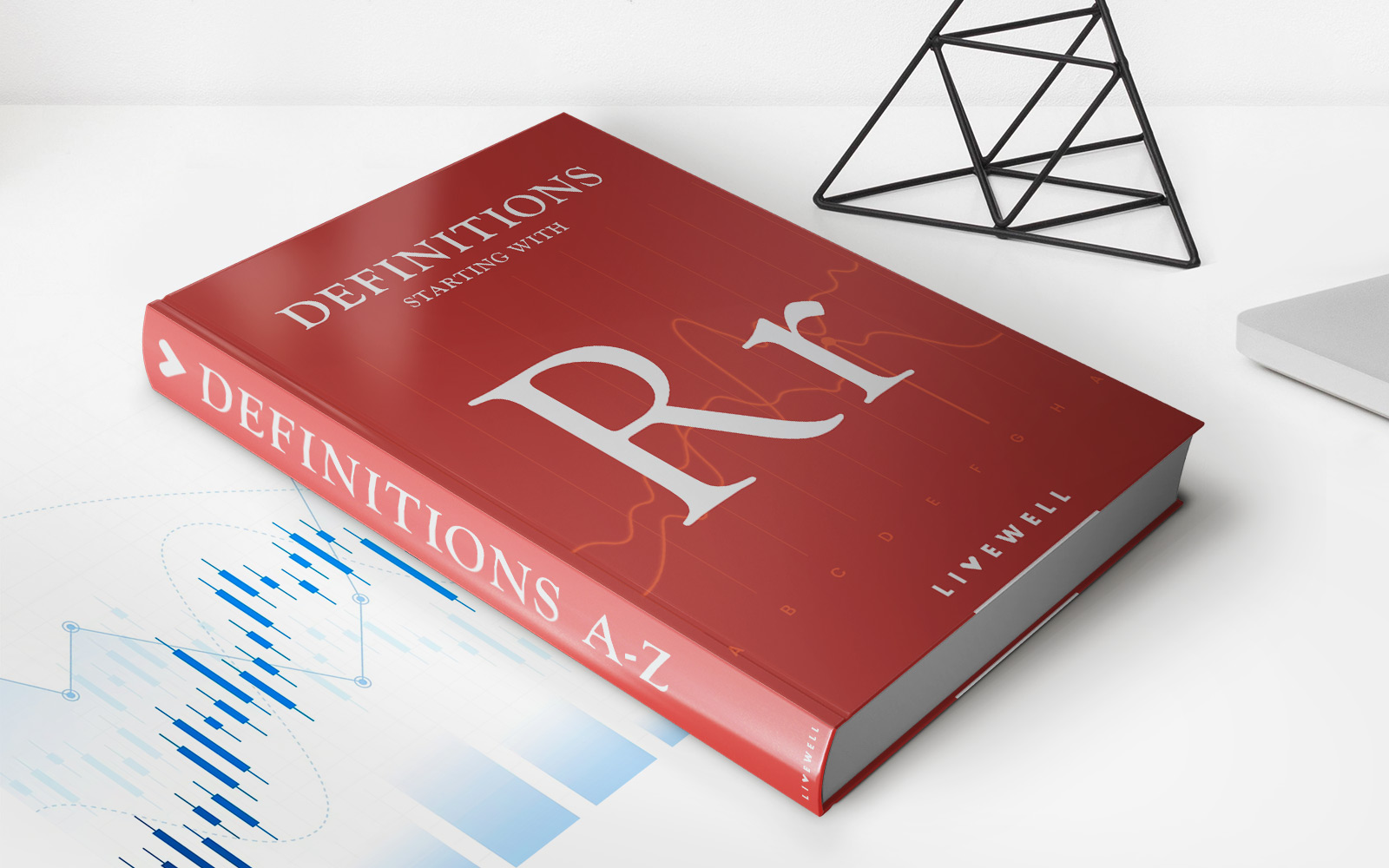

Finance
How Capital Structure Affects Bankruptcy
Published: December 25, 2023
Learn how the capital structure of a company can impact its risk of bankruptcy and explore the key factors to consider in financial decision-making.
(Many of the links in this article redirect to a specific reviewed product. Your purchase of these products through affiliate links helps to generate commission for LiveWell, at no extra cost. Learn more)
Table of Contents
- Introduction
- Definition of Capital Structure
- Factors Influencing Capital Structure
- Relationship between Capital Structure and Bankruptcy
- The Role of Debt in Bankruptcy
- Impact of Equity on Bankruptcy Probability
- Optimal Capital Structure for Avoiding Bankruptcy
- Case Studies on Capital Structure and Bankruptcy
- Conclusion
Introduction
Welcome to our comprehensive guide on how capital structure affects bankruptcy in the world of finance. Capital structure refers to the way a company finances its operations through a mix of debt and equity. It plays a crucial role in determining a company’s financial health, stability, and vulnerability to bankruptcy.
Bankruptcy is a legal status that declares a company’s inability to repay its debts to creditors. It is a situation that can have severe consequences, including potential business closure and liquidation.
Understanding the relationship between capital structure and bankruptcy is essential for investors, entrepreneurs, and financial professionals. By managing the balance between debt and equity effectively, companies can reduce the risk of bankruptcy and enhance their long-term sustainability.
In this article, we will delve into the factors influencing capital structure, explore how capital structure impacts bankruptcy probability, and discuss the optimal capital structure for avoiding bankruptcy. We will also provide real-life case studies that demonstrate the practical implications of capital structure decisions.
Whether you’re a business owner looking to optimize your company’s financial structure, an investor evaluating the solvency of potential investments, or simply someone interested in understanding the dynamics of capital and bankruptcy, this guide will provide you with valuable insights and knowledge.
So, let’s dive into the world of capital structure and bankruptcy and uncover the factors that can make or break a company’s financial stability.
Definition of Capital Structure
Capital structure refers to the composition of a company’s financial resources, specifically how it funds its operations through a combination of debt and equity. It represents the way in which a company balances its sources of financing to support its growth, operational needs, and investment opportunities.
Debt capital refers to money borrowed by a company from external sources, such as banks or bondholders, with an obligation to repay the principal amount plus interest. Equity capital, on the other hand, represents ownership in the company and is typically provided by shareholders who invest their own funds in exchange for a share of ownership and potential returns.
A crucial aspect of capital structure is the choice between debt and equity financing. Companies must determine the optimal mix that aligns with their financial goals, risk appetite, and profitability prospects.
The primary components of capital structure include long-term debt, short-term debt, preferred equity, and common equity. Long-term debt typically consists of bonds or loans with a maturity period exceeding one year. Short-term debt, also known as current liabilities, includes obligations that are due within one year such as payments on credit lines or short-term loans.
Preferred equity represents ownership with certain preferences over common equity, such as priority in dividend payments and claims on assets in the event of liquidation. Common equity refers to ownership shares held by common shareholders, who have voting rights and participate in the company’s profits and losses.
It is important to note that the capital structure can vary across industries, company sizes, and stages of growth. For example, technology startups may rely heavily on equity financing, while well-established companies in mature industries may rely more on debt financing.
By determining the optimal capital structure, companies can strike a balance between leveraging debt to benefit from tax advantages and maintaining an appropriate level of equity to support long-term stability and growth.
In the next section, we will explore the various factors that influence a company’s choice of capital structure.
Factors Influencing Capital Structure
There are several factors that influence a company’s choice of capital structure. These factors can vary depending on the industry, market conditions, and company-specific characteristics. Understanding these factors is crucial for making informed decisions regarding capital structure and optimizing financial performance. Here are some key factors:
- Business Risk: The level of risk associated with a company’s operations can impact its capital structure decisions. Companies with higher business risk, such as those in volatile industries or with unpredictable cash flows, may prefer to rely more on equity financing to avoid the burden of fixed debt payments.
- Financial Flexibility: The ability to raise capital quickly and easily is essential for companies. If a company anticipates future investment opportunities or needs to fund unexpected expenses, it may opt for a higher proportion of equity financing to maintain financial flexibility and avoid overburdening itself with debt.
- Cost of Capital: Both debt and equity financing come with associated costs. Debt financing typically involves paying interest to lenders, while equity financing includes dividends and potential dilution of ownership. Companies analyze the cost of each type of financing to determine the optimal balance that minimizes the overall cost of capital.
- Tax Considerations: Debt financing offers potential tax advantages as interest payments are tax-deductible. This tax shield can make debt financing more attractive, especially in jurisdictions with favorable tax policies. However, companies must carefully evaluate the level of debt that maximizes tax benefits without exposing themselves to excessive financial risk.
- Market Conditions: The state of the financial markets can influence capital structure decisions. Availability and cost of debt, investor appetite for equity, and macroeconomic factors can all impact the optimal capital structure for a company at a given point in time.
- Growth Opportunities: Companies with growth prospects may require additional funding to finance expansion plans. In such cases, a higher proportion of equity financing may be preferred as it allows for greater access to capital markets and mitigates the risk of financial distress during periods of rapid growth.
It is important for companies to conduct a thorough analysis of these factors and evaluate their financial position, risk tolerance, and growth goals. By considering these factors, companies can determine the appropriate capital structure that aligns with their strategic objectives and maximizes shareholder value.
Now that we understand the factors that influence capital structure decisions, let’s explore the relationship between capital structure and bankruptcy in more detail.
Relationship between Capital Structure and Bankruptcy
The capital structure of a company plays a significant role in determining its vulnerability to bankruptcy. A company’s level of debt and the proportion of equity can greatly impact its ability to meet financial obligations and sustain operations during challenging times.
Excessive debt in a company’s capital structure can increase the risk of bankruptcy. When a company has a high level of debt, it faces the burden of making regular interest and principal payments. If the company experiences a decline in revenue or faces unexpected financial challenges, it may struggle to meet its debt obligations. In such cases, the company may be forced to default on its debt, which can eventually lead to bankruptcy.
On the other hand, a high proportion of equity in the capital structure can provide a cushion against bankruptcy risk. Equity financing does not involve fixed interest or principal payments like debt does. Instead, equity investors share in the company’s profits and losses. This means that during periods of financial distress, equity holders may be more flexible in terms of receiving returns or accepting losses, which can help alleviate the risk of bankruptcy.
It is important to note that the relationship between capital structure and bankruptcy is not black and white. Moderate levels of debt can be beneficial for a company as they provide tax advantages and leverage potential. Debt financing allows companies to amplify returns for shareholders as long as they can manage the associated risks.
Additionally, the impact of capital structure on bankruptcy can be nuanced by other factors such as industry dynamics, market conditions, and management capabilities. Companies in different sectors may have varying optimal capital structures. For example, capital-intensive industries like manufacturing may rely more on debt financing, while technology startups may prioritize equity financing to fund growth.
Ultimately, finding the right balance between debt and equity in a company’s capital structure is crucial for managing bankruptcy risk. It requires careful analysis of the company’s financial position, cash flow projections, risk tolerance, and growth plans. Striking the right balance enables companies to effectively manage debt obligations and maintain financial stability even during challenging periods.
In the next section, we will explore the role of debt and equity in bankruptcy and how they impact a company’s financial health.
The Role of Debt in Bankruptcy
Debt plays a pivotal role in bankruptcy as it represents the primary financial obligation that a company must fulfill. Debt comes in various forms, including bank loans, bonds, and other forms of borrowing. While debt financing can provide the necessary capital for growth and expansion, it also introduces significant financial risk.
One of the key factors that determine a company’s vulnerability to bankruptcy is its debt level and the ability to meet its debt repayment obligations. When a company faces financial difficulties, such as a decline in revenue or increased operating costs, it may struggle to generate sufficient cash flow to service its debt. This can lead to missed payments or default on the debt, ultimately culminating in bankruptcy.
Debt repayment obligations are typically structured with fixed payment amounts and specific due dates. Failure to meet these obligations can result in legal action by creditors, including foreclosure, seizure of assets, or liquidation of the company. In some cases, creditors may arrange for a restructuring of the debt or negotiate a settlement to avoid bankruptcy. However, these options come with their own set of challenges and implications.
Another aspect of debt that influences bankruptcy risk is the cost of servicing the debt. Interest payments on debt can place a significant financial burden on a company, especially if the interest rates are high or the debt is structured with periodic increases in interest rates. Higher interest expenses reduce the company’s profitability and cash flow, making it more challenging to meet debt obligations and sustain operations.
Furthermore, the composition of the debt also matters in bankruptcy scenarios. Companies with a higher proportion of short-term debt, such as revolving lines of credit or commercial paper, face the risk of more immediate liquidity challenges. If the company is unable to refinance or extend these debts, it may be forced into bankruptcy due to the inability to meet short-term payment obligations.
However, it is important to note that debt is not inherently detrimental to a company’s financial health. Debt can be advantageous as it allows companies to leverage their operations and potentially generate higher returns for shareholders. Additionally, interest payments on debt can be tax-deductible, providing a cost advantage for companies. It becomes crucial for companies to carefully manage their debt levels, consider their ability to generate sufficient cash flow, and assess the associated risks.
In the next section, we will explore the impact of equity on the probability of bankruptcy and its role in financial stability.
Impact of Equity on Bankruptcy Probability
Equity plays a significant role in mitigating the probability of bankruptcy for a company. Unlike debt, equity financing does not involve fixed payment obligations, which provides greater flexibility and resilience during financial hardships.
Equity represents ownership in a company and is often provided by shareholders who invest their own funds in exchange for a share of ownership and potential returns. Equity holders bear the risk of potential losses but also have the opportunity to benefit from the company’s profits and value appreciation. This shared risk and reward structure can help safeguard the company against bankruptcy.
One of the primary advantages of equity financing is the absence of fixed interest or principal payments. Unlike debt, equity financing does not require regular cash outflows for interest expenses, reducing the financial burden on the company. This can be especially beneficial during periods of financial distress when generating sufficient cash flow to meet debt obligations becomes challenging.
In the event of financial difficulties, equity investors may be more flexible in terms of receiving returns or accepting losses. They have a greater ability to absorb financial shocks and may be open to reduced or suspended dividend payments to support the company’s recovery. This flexibility provides the company with breathing room and enhances its ability to navigate through challenging times.
Furthermore, a higher proportion of equity in the capital structure can improve the company’s creditworthiness in the eyes of lenders and investors. Equity provides a cushion of protection to creditors, as the equity holders bear the first level of risk. This can result in more favorable lending terms and lower interest rates on debt, reducing the overall financial burden and enhancing the company’s ability to manage debt obligations.
Equity financing also allows for greater financial flexibility and access to capital markets. Companies with a higher proportion of equity in their capital structure may find it easier to raise additional funds when needed, whether through secondary stock offerings, private placements, or venture capital investments. This ability to quickly access capital can help companies weather financial challenges and reduce the risk of bankruptcy.
However, it is important to note that while equity financing provides certain advantages in bankruptcy scenarios, it may come with dilution of ownership as additional equity is issued. Dilution can occur when new shares are issued to raise capital, potentially reducing the percentage ownership of existing shareholders. Companies must carefully balance the need for equity financing with the preservation of shareholders’ interests.
Overall, the presence of equity in a company’s capital structure can significantly reduce the probability of bankruptcy by providing greater flexibility, resilience, and access to capital. Striking a proper balance between debt and equity financing is crucial for companies to maintain financial stability and sustain their operations during challenging times.
In the next section, we will explore the concept of optimal capital structure and how it helps companies avoid bankruptcy.
Optimal Capital Structure for Avoiding Bankruptcy
Finding the optimal capital structure is crucial for minimizing the risk of bankruptcy and ensuring long-term financial stability. The optimal capital structure strikes a balance between debt and equity financing that aligns with the company’s financial goals, risk tolerance, and operational requirements.
While there is no one-size-fits-all approach to determining the optimal capital structure, there are several considerations that can guide companies in their decision-making process:
- Risk Profile: Companies must assess their risk profile and determine their ability to tolerate financial setbacks. High-risk industries, cyclical businesses, and startups may opt for a lower level of debt to mitigate bankruptcy risk. Conversely, low-risk companies in stable industries may feel comfortable taking on more debt to benefit from tax advantages.
- Cash Flow Stability: The stability and predictability of a company’s cash flow can influence the optimal capital structure. Companies with stable cash flows may be more inclined to take on debt as their ability to service interest and principal payments is relatively assured. In contrast, companies with volatile or uncertain cash flows may prioritize a higher proportion of equity to avoid the risk of financial distress.
- Growth Plans: Companies with aggressive growth strategies may require additional capital to fuel expansion. They may choose to raise equity financing to fund their growth initiatives while avoiding excessive reliance on debt. Equity financing can provide the necessary capital without burdening the company with fixed debt payments during periods of rapid expansion.
- Tax Considerations: The impact of taxes on a company’s capital structure decisions should not be overlooked. Debt financing offers potential tax advantages as interest payments are tax-deductible, reducing the overall cost of capital. Companies must carefully assess the tax implications of different financing options and strike a balance that maximizes tax benefits without compromising financial stability.
- Industry Norms: Capital structure decisions should also take into account industry norms and practices. Some industries may have specific capital structure expectations or constraints that companies must consider to remain competitive and financially stable. Analyzing industry peers and their capital structures can provide valuable insights and benchmarking opportunities.
It is important for companies to regularly review and reassess their capital structure to ensure it remains aligned with their evolving financial situation, market conditions, and strategic objectives. Changes in the business environment, such as shifts in industry dynamics, regulatory changes, or economic downturns, may necessitate adjustments to the capital structure to mitigate bankruptcy risk.
Ultimately, the optimal capital structure strikes a balance between leveraging debt effectively, maintaining a sustainable level of equity, and managing the risks associated with both forms of financing. By carefully considering these factors and regularly monitoring the financial health of the company, companies can reduce the risk of bankruptcy and enhance their long-term stability.
In the next section, we will explore real-life case studies that highlight the impact of capital structure decisions on bankruptcy outcomes.
Case Studies on Capital Structure and Bankruptcy
To further illustrate the impact of capital structure decisions on bankruptcy outcomes, let’s explore a few real-life case studies:
- Lehman Brothers: The bankruptcy of Lehman Brothers in 2008 serves as a prominent example of the consequences of excessive debt in a company’s capital structure. Lehman Brothers, a global investment bank, had relied heavily on debt financing to fund its expansion and mortgage-backed securities activities. When the financial crisis hit, a significant portion of the company’s assets became illiquid and witnessed substantial declines in value. The high levels of debt and the inability to meet repayments ultimately led to the company’s bankruptcy filing, which had far-reaching implications on the global financial system.
- Apple Inc.: Apple’s capital structure is a case study highlighting the role of equity in ensuring financial stability. When Steve Jobs returned to Apple in 1997, the company was on the brink of bankruptcy. As part of its turnaround strategy, Apple opted for significant equity financing in the form of private investments and stock offerings. This allowed the company to raise capital, clear its debt, and fund its innovative product development initiatives. The injection of equity, along with Jobs’ successful execution of a new business model, enabled Apple to transform into one of the world’s most valuable and financially stable companies.
- Toys “R” Us: Toys “R” Us, a well-known toy retailer, filed for bankruptcy in 2017 partly due to its unsustainable capital structure. The decline in toy sales, increased competition from e-commerce platforms, and a heavy debt load made it difficult for the company to meet its financial obligations. Toys “R” Us had taken on substantial leverage in a private equity buyout years earlier, saddling it with significant debt payments. The burden of debt and the inability to adapt to changing market trends eventually led to the company’s bankruptcy and subsequent liquidation.
- Tesla Inc.: Tesla provides an example of a company that strategically manages its capital structure to balance debt and equity financing. Tesla has utilized a combination of debt and equity financing to support its ambitious growth plans in the electric vehicle industry. The company has raised funds through several rounds of equity offerings, allowing it to finance research and development, build production capacity, and invest in its future. At times, Tesla has also issued convertible debt securities, combining elements of debt and equity to meet its financing needs. This approach has helped Tesla navigate its industry’s unique challenges and maintain a relatively stable financial position.
These case studies highlight the critical role of capital structure decisions in determining a company’s financial health and bankruptcy risk. They demonstrate the importance of carefully managing debt levels, considering equity financing, and adapting to changing market dynamics to avoid financial distress.
It is essential for companies to analyze these real-life examples, learn from their successes and failures, and apply those learnings to their own capital structure decisions. By doing so, companies can make informed choices that enhance their financial stability and reduce the risk of bankruptcy.
In the final section, we will summarize the key takeaways from our exploration of capital structure and bankruptcy.
Conclusion
In conclusion, capital structure plays a critical role in a company’s vulnerability to bankruptcy and overall financial stability. By balancing the use of debt and equity financing, companies can effectively manage their financial obligations and reduce the risk of bankruptcy.
The relationship between capital structure and bankruptcy is complex. Excessive debt can increase bankruptcy risk, as it adds fixed payment obligations that may become unsustainable during challenging financial periods. On the other hand, equity financing can provide flexibility and resilience, as equity holders are more willing to absorb losses and may not require fixed payments.
The factors influencing capital structure decisions include the company’s risk profile, financial flexibility needs, cost of capital, tax considerations, market conditions, and growth opportunities. Companies must assess these factors to determine the optimal capital structure that aligns with their unique circumstances.
Real-life case studies further exemplify the impact of capital structure decisions on bankruptcy outcomes. Examples such as Lehman Brothers and Toys “R” Us demonstrate the risks of excessive debt in a company’s capital structure, while companies like Apple and Tesla showcase the benefits of strategic equity financing.
To avoid bankruptcy, companies should regularly review and reassess their capital structure, taking into account changes in the business environment and their own financial position. Maintaining a balance between debt and equity financing, considering risk profiles, cash flow stability, growth plans, tax implications, and industry norms, can help companies navigate financial challenges and enhance their long-term stability.
By understanding the dynamics of capital structure and bankruptcy, investors, entrepreneurs, and financial professionals can make informed decisions to protect their financial interests and support sustainable business growth.
Remember, the optimal capital structure is unique to each company and requires careful analysis and adaptation to ensure financial well-being and minimize the risk of bankruptcy.














